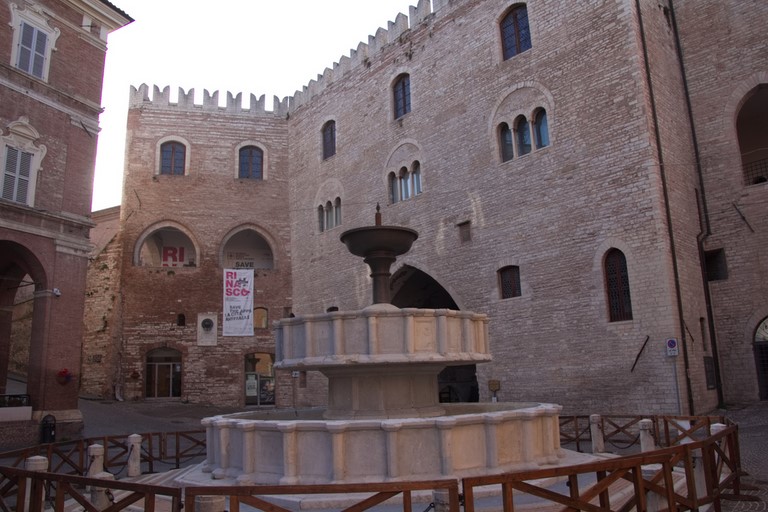Fabriano - Sights and History
Sights
- The Paper Museum (Museo della Carta): Fabriano is known for its long tradition of papermaking, and this museum is entirely dedicated to this art form. It presents the history of paper, displays historical tools and techniques, and allows visitors to experience the papermaking process firsthand.
- The Rocca Flea Fortress: This imposing fortress is perched on a hill and offers an impressive view over the city. It dates back to the 14th century and now houses the Civic Museum (Museo Civico). Here you can admire historical artifacts, weapons and works of art and learn more about the history of the region.
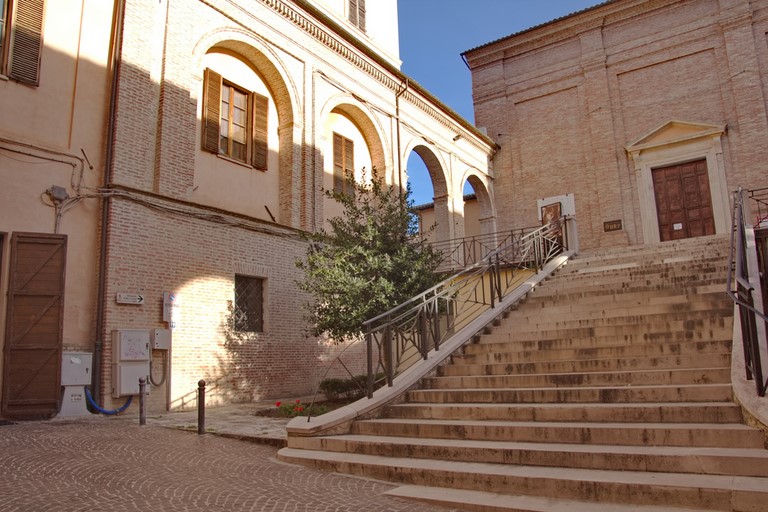
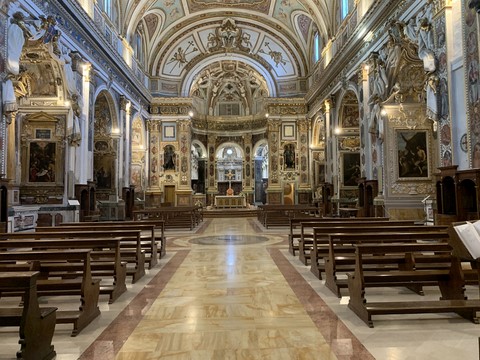
Kirche San Domenico
Another important church in Fabriano, known for its architectural beauty and religious artwork. Particularly worth seeing is the altarpiece of the Madonna of the Rosary by Lorenzo Lotto, a famous Italian Renaissance painter.
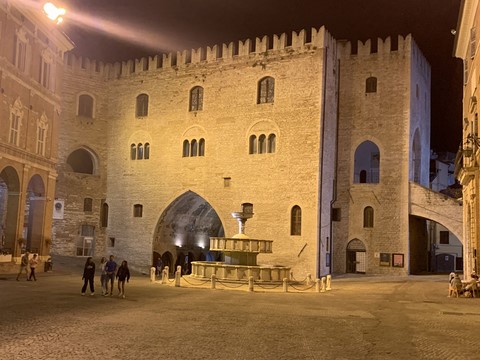
Palazzo del Podestà
The medieval building of the Podestà (representative of the lord of the city). The three buildings were built entirely of white stone in 1255. The bridge in the middle building is reminiscent of the old city river that used to flow underneath. Below the arch are 13th-14th century frescoes of fighting warriors and a wheel of fortune being steered by a woman.
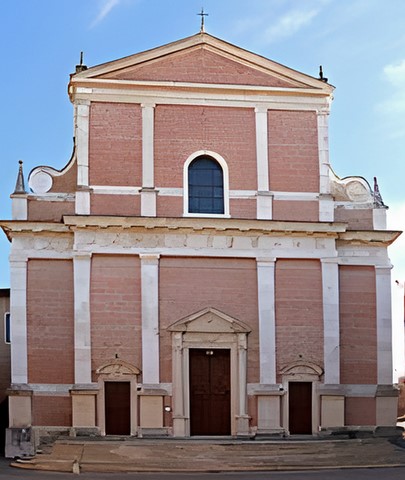
Cattedrale di San Venanzio
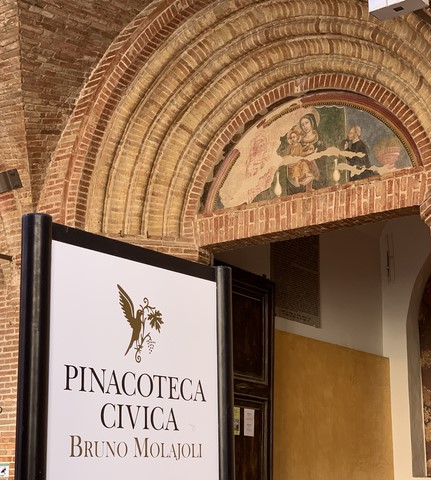
Pinacoteca Civica Bruno Molajoli
History
In the area around Fabriano, Picenes and Umbrians settled in the Iron Age - in the 4th century, Senonese Gauls settled here. The first nucleus of the future Fabriano, the castle of Castelvecchio, was probably founded in 411 A.D. immediately after the barbarian invasions. The inhabitants probably came from the abandoned villages of Attidium (Attiggio) and Tuficum (Albacina).
From 571 until the defeat of the Lombards in 773, Fabriano belonged to the Duchy of Spoleto. During this period numerous castles and Benedictine monasteries were built. The first historical references to the Castellum Fabriani date from 1040 to 1041. In the 13th century the two castles Castelvecchio and Poggio united to form a town that grew rapidly. In 1234 Fabriano became a free municipality and developed into an artistic center with important workshops. In the 14th century the municipality took an active part in the political struggles between the Guelfs and the Ghibellines. From 1378, the powerful Chiavelli family ruled Fabriano, followed by a brief subjugation to Francesco Sforza. Finally, the town was incorporated into the Papal States after the Chiavelli were assassinated in 1435.
The first paper mill on European soil was founded in Fabriano in 1276. According to a tradition, the inhabitants learned from Arab prisoners captured during the storming of Ancona. From 1264 there is a parchment (now in Macelica) that was made by mixing glue from animal gelatin and cotton fibers. In order to make the papers unmistakable, watermarks were incorporated, visible only in backlight. This had been copied from the weavers. Raffaello and Michelangelo and also Ludwig van Beethoven used paper from Fabriano. This led to Fabriano's prosperity in the late Middle Ages and the Renaissance.
In 1515 Fabriano was sacked by the Spaniards, due to disagreements of the population with Pope Leo X. During this period, Captain Giovanbattista Zobicco organized the defense of the town. In 1519, Bishop Pietro Paolo Venanzi called for an armed expedition against the rebellious Fabriano. Despite external military success, the city remained marked by unrest. Pope Leo X, fearing that Fabriano might become too powerful, sent a special envoy to the Fabriano area to quell the unrest and prepare for the pacification of the various factions. Then he summoned Zobicco to Rome, apparently with the promise of a pardon. However, perhaps because of further hostile behavior, he was imprisoned and beheaded after excruciating torture.
In the 18th century, the town experienced some economic prosperity. In 1728 Fabriano was elevated to diocese status and confirmed in 1785. In 1798 Fabriano became part of the Roman Republic, but returned to papal rule in 1800. In the 19th century the town alternated between various dominions, including the Italian Kingdom and Austrian rule. In 1860 Fabriano became part of the Kingdom of Italy. The Ancona - Foligno and Fabriano - Urbino railroad lines were inaugurated. The Camurio Theater burned down in 1863, but the Gentile Theater was built in 1870. In 1884 the civil hospital was opened.
During the Second World War Fabriano was hit by more than 55 bombs, there were hundreds of deaths and much material damage
